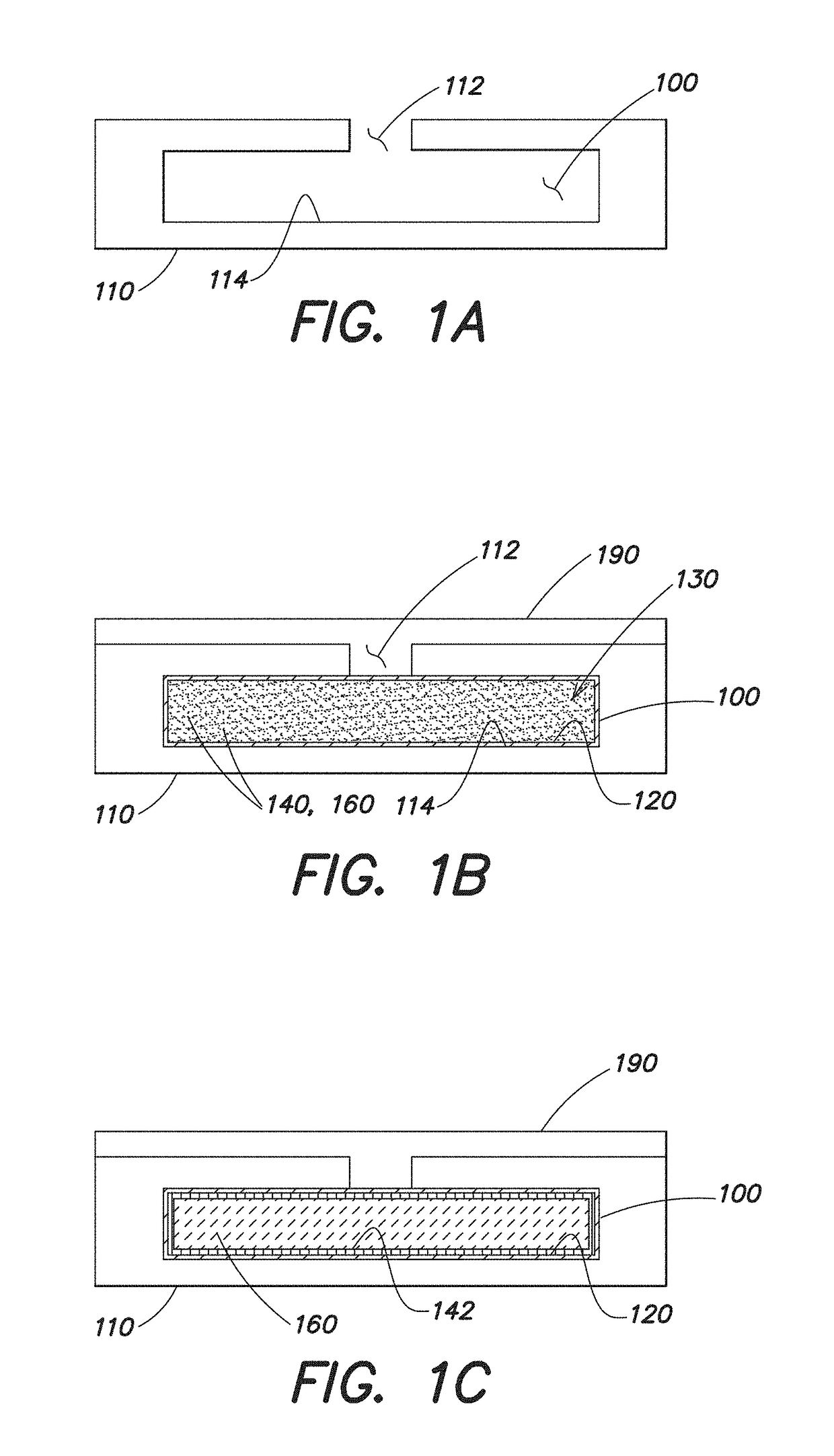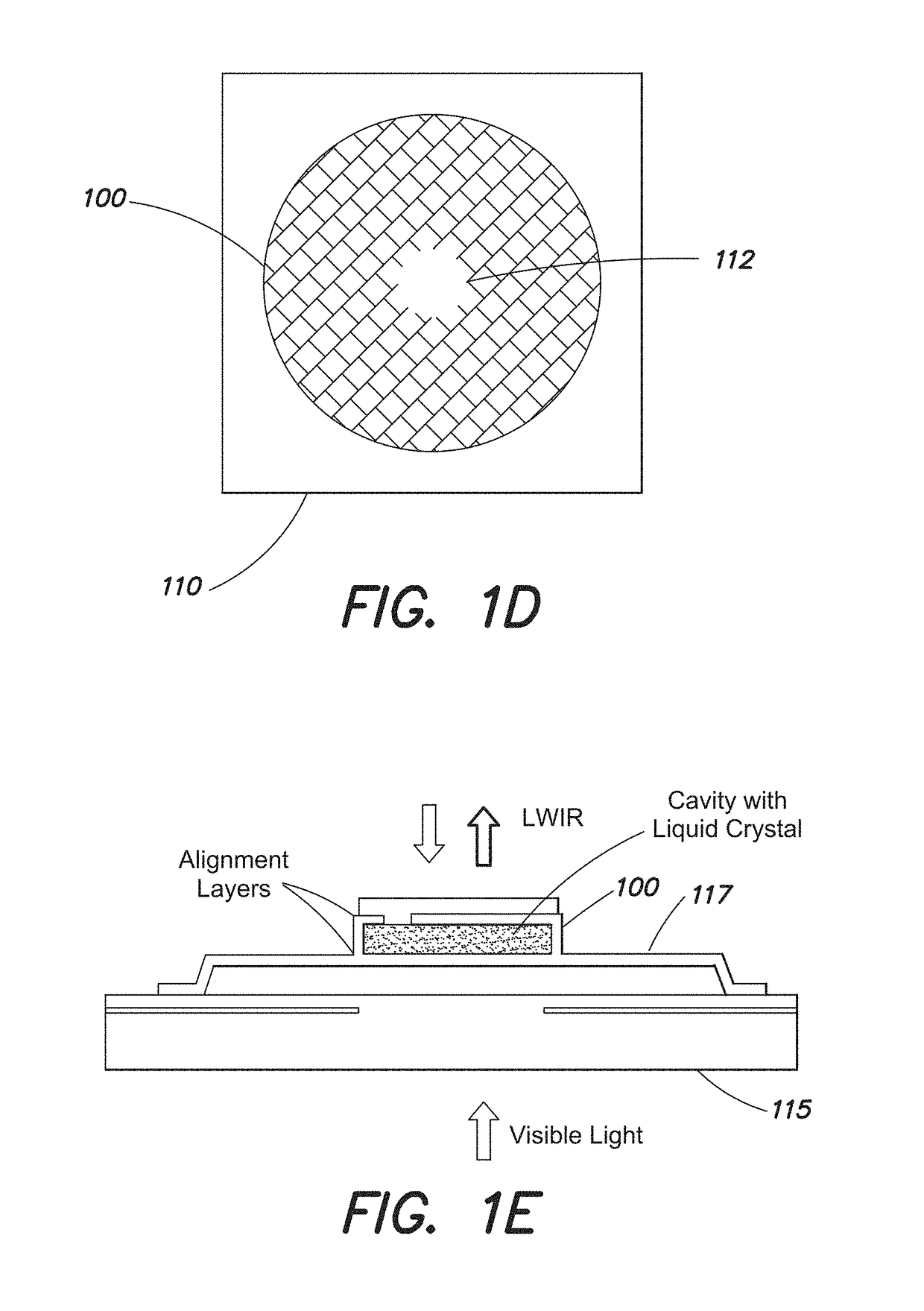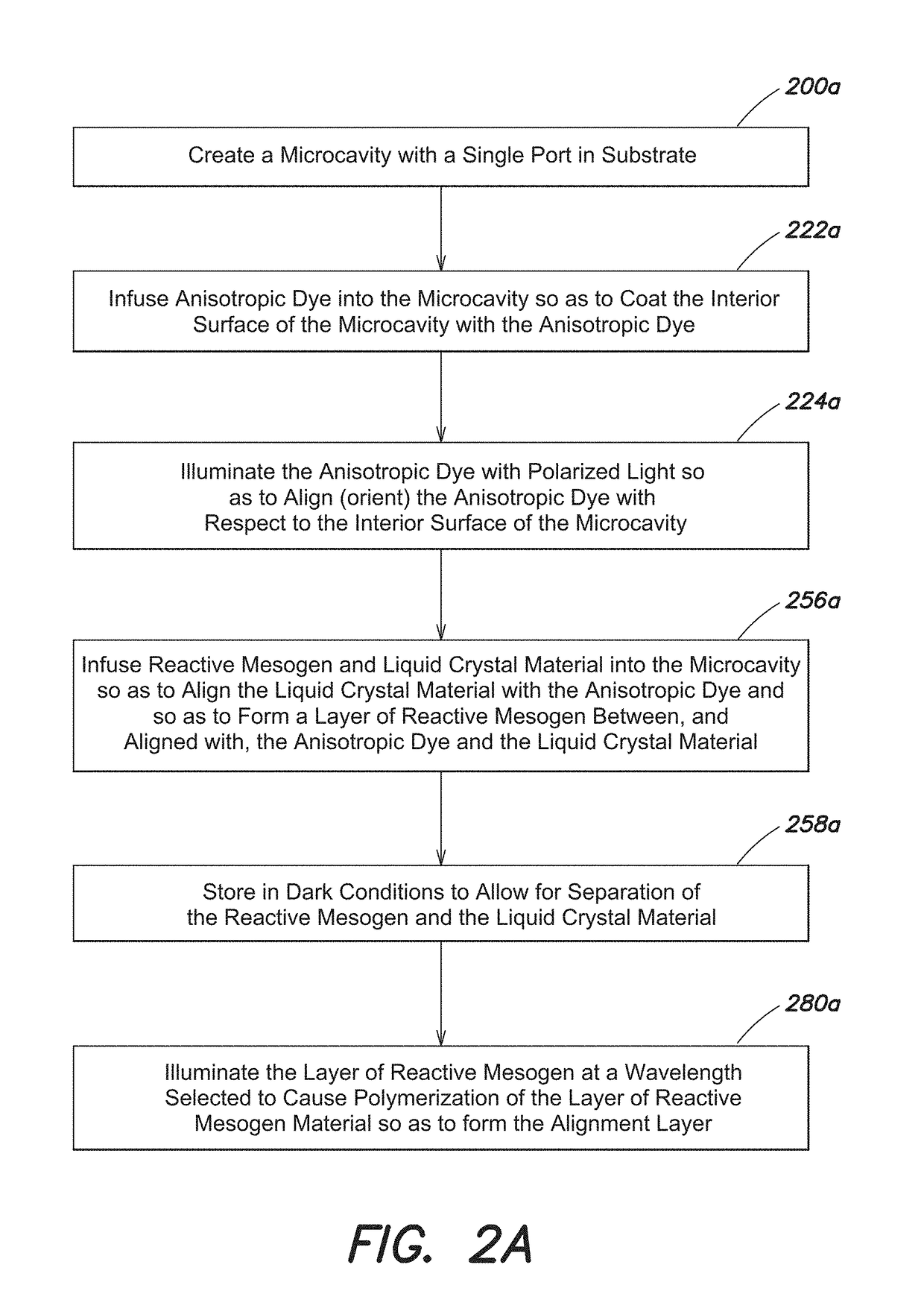Methods and Apparatus for Liquid Crystal Photoalignment
a liquid crystal and photoalignment technology, applied in the direction of liquid crystal compositions, chemistry apparatus and processes, instruments, etc., can solve the problem of not being able to apply reactive mesogen, and achieve the effect of stabilizing azo dye materials
- Summary
- Abstract
- Description
- Claims
- Application Information
AI Technical Summary
Benefits of technology
Problems solved by technology
Method used
Image
Examples
Embodiment Construction
[0056]As discussed above, conventional photoalignment involves forming a layer of photo-alignable material, such as a dichroic dye (a dye that absorbs light anisotropically, such as Brilliant yellow or another azo dye), on the substrate surface. A thin coating of the azo dye is placed on the glass or electrode surface, and then blue polarized light is shined upon it. The polarized light aligns the azo dye molecules, which tend to be oblong, perpendicular to the polarization in a semi-permanent position. Unfortunately, azo dye layers are not stable enough for most applications as they tend to degrade when exposed to visible light.
[0057]Forming a layer of polymerized reactive mesogen (RM) or another suitable material over the azo dye layer effectively increases the photostability of the azo dye layer to create a more stable alignment layer. This material (e.g., the RM) forms a polymerized layer which, when polymerized, enforces the existing liquid crystalline alignment rather than dis...
PUM
| Property | Measurement | Unit |
|---|---|---|
| weight ratio | aaaaa | aaaaa |
| thickness | aaaaa | aaaaa |
| thickness | aaaaa | aaaaa |
Abstract
Description
Claims
Application Information
 Login to View More
Login to View More - R&D
- Intellectual Property
- Life Sciences
- Materials
- Tech Scout
- Unparalleled Data Quality
- Higher Quality Content
- 60% Fewer Hallucinations
Browse by: Latest US Patents, China's latest patents, Technical Efficacy Thesaurus, Application Domain, Technology Topic, Popular Technical Reports.
© 2025 PatSnap. All rights reserved.Legal|Privacy policy|Modern Slavery Act Transparency Statement|Sitemap|About US| Contact US: help@patsnap.com



